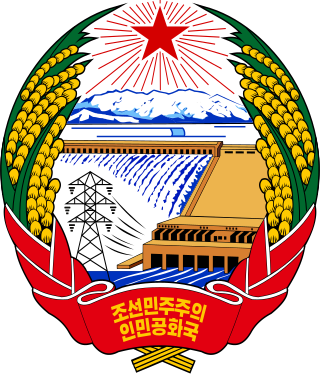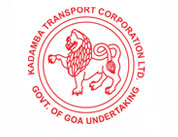Related Research Articles

A student is a person enrolled in a school or other educational institution.

Education in Canada is for the most part provided publicly, and is funded and overseen by provincial, territorial and local governments. Education is within provincial jurisdiction and the curriculum is overseen by the province. Education in Canada is generally divided into primary education, followed by secondary education and post-secondary. Within the provinces under the ministry of education, there are district school boards administering the educational programs.
A state school or public school is a primary or secondary school that educates all students without charge. Such schools are funded in whole or in part by taxation.
The lyceum is a category of educational institution defined within the education system of many countries, mainly in Europe. The definition varies among countries; usually it is a type of secondary school. Generally in that type of school the things that are taught are basic science and also in some part of that type of schools, some introduction to specific kind of jobs also may be done.

Margao is the commercial capital of the Indian state of Goa. It stands on banks of the Sal river and is the administrative headquarters of Salcete sub-district and South Goa district. It is Goa's second largest city by population after Vasco.

Education in North Korea is universal and state-funded schooling by the government. The self-reported national literacy rate for citizens aged 15 and older is 100 percent (approx.). As of 2021, UNESCO Institute for Statistics does not report any data for North Korea's literacy rates. Children go through one year of kindergarten, four years of primary education, six years of secondary education, and then on to university.

Education in Portugal is free and compulsory until the age of 18, when students usually complete their year 12. However, only one of those requirements is necessary. The education is regulated by the State through the Ministry of Education. There is a system of public education and also many private schools at all levels of education. The first Portuguese medieval universities, such as the University of Coimbra, were created in the 13th century, and the national higher education system is fully integrated into the European Higher Education Area.

Porvorim, is the De facto legislative and executive capital of the state of Goa, India, as both the Goa Legislative Assembly and Secretariat are functioning from the same complex in the region of Alto Porvorim in porvorim.(Alto – Portuguese word meaning high or upper). Soon it will also become the De facto judicial capital of Goa, when the High Court of Bombay at Goa which is currently functioning from Lyceum complex in Panaji, is transferred to the new building complex which is being constructed in Alto – Betim Porvorim region of Porvorim. The construction of the new building is expected to be completed by December 2020. Porvorim is situated on the right bank of the Mandovi River, as de jure capital of Goa, Panaji is located on the opposite bank. Porvorim is considered an upmarket residential hub as it lies on the Mumbai–Goa highway NH66. Goa's largest shopping centre – Mall De Goa – is situated here.

Kadamba Transport Corporation abbreviated as KTC is a Government of Goa road transport undertaking. It was set up in 1980 by then Chief Minister Pratapsingh Rane. Goa has long been dependent on privatised bus-transport, and the blue-and-red-and-white Kadamba buses are an exception to this rule. While the KTC has provided transport and connectivity to Goa's main towns and rural hinterland, it has also, in recent years, faced charges of mismanagement, politicisation and corruption in some of its deals.
Educational stages are subdivisions of formal learning, typically covering early childhood education, primary education, secondary education and tertiary education. The United Nations Educational, Scientific and Cultural Organization (UNESCO) recognizes nine levels of education in its International Standard Classification of Education (ISCED) system. UNESCO's International Bureau of Education maintains a database of country-specific education systems and their stages. Some countries divide levels of study into grades or forms for school children in the same year.
Dr. Pundalik Dattatreya Gaitonde was a surgeon from Goa and an active participant in the Goa liberation movement. Along with Antonio Colaco, Gaitonde was nominated by the President of India to the 3rd Lok Sabha in 1962 following the incorporation of Goa, Daman and Diu into India on 19 December 1961.

Mormugao is a seaport city situated in the eponymous Mormugao taluka (municipality) of the South district, in the Goa state, India. It has a deep natural harbour and remains Goa's chief port.
Education in the Philippines is provided by public and private schools, colleges, universities, and technical and vocational institutions in the country. Funding for public education comes from the national government. For the academic year 2017–2018, about 83% of K–12 students attended public schools and about 17% either attended private schools or were home-schooled.

Education in Western Australia consists of public and private schools in the state of Western Australia, including public and private universities and TAFE colleges. Public school education is supervised by the Department of Education, which forms part of the Government of Western Australia. The School Curriculum and Standards Authority is an independent statutory authority responsible for developing a curriculum and associated standards in all schools, and for ensuring standards of student achievement, and for the assessment and certification according to those standards.
Mushtifund Saunstha, or simply The Saunstha, is a not-for-profit educational institution founded in 1908 in Goa, India by locals aspiring to spread elementary education in the native Konkani and Marathi language as opposed to that in the Portuguese language in use then as a primary language of instruction as a direct consequence of the Portuguese rule in Goa. The Saunstha has a student community of over 2,500. It runs three elementary schools, one high school, one junior college, and one technical school.

Education in Beijing includes information about primary and secondary schools in Beijing.

The Goan Muslims are a minority community who follow Islam in the Indian coastal state of Goa, some are also present in the union territory of Damaon, Diu& Silvassa. They are native to Goa, unlike recent Muslim migrants from mainland India and are commonly referred to as Moir by Goans in Goan Konkani. Moir is derived from the Portuguese word mour. The Portuguese called them Mouros because they were in contact with the Moors, people of predominantly Muslim Maghreb country, who had conquered and colonised the Iberian peninsula for centuries.

Goa is a state on the southwestern coast of India. It is situated within the Konkan region, geographically separated from the Deccan highlands by the Western Ghats. It is bound by the Indian states of Maharashtra to the north, and Karnataka to the east and south, with the Arabian Sea in the west. It is India's smallest state by area and fourth-smallest by population. Goa has the highest GDP per capita among all Indian states, two and a half times as high as the GDP per capita of the country as a whole. The Eleventh Finance Commission of India named Goa the best-placed state because of its infrastructure, and India's National Commission on Population rated it as having the best quality of life in India. It is the third-highest ranking among Indian states in the human development index.
References
- ↑ GVMS online
- ↑ "Profiles of eminent Goans, past and present" By J. Clement Vaz